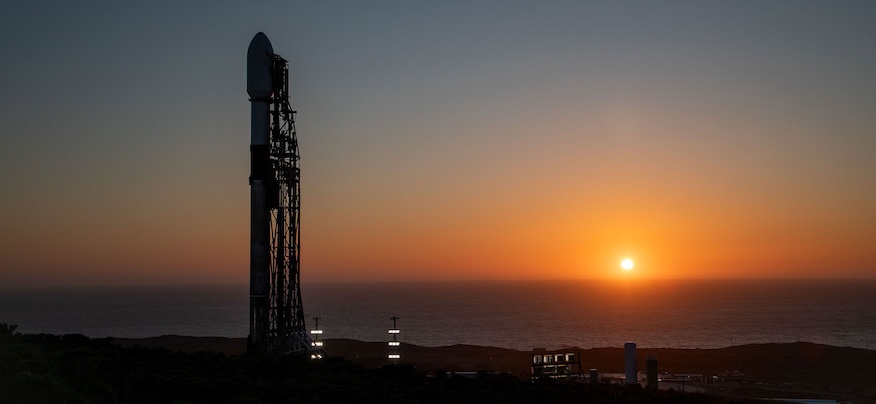NASA has announced the selection of three innovative scientific instruments that will be vital to the Artemis mission, specifically for the Lunar Terrain Vehicle (LTV), a key part of NASA’s lunar exploration plans. These instruments, designed to uncover more about the Moon’s surface and subsurface, will help NASA reach unprecedented goals in understanding Earth’s closest neighbor. The announcement was made on July 10, 2025, highlighting the ongoing progress of the Artemis program. With two instruments set for integration into the LTV and one designated for future orbital deployment, the tools will help define future exploration efforts on the Moon. This selection marks a significant step toward achieving long-term goals in both scientific discovery and human space exploration.
Transforming Lunar Exploration: The Artemis Lunar Terrain Vehicle
The Artemis Lunar Terrain Vehicle (LTV) represents a pivotal advancement in NASA’s efforts to explore the Moon. After more than five decades, humanity is set to once again traverse the lunar surface in a crew-driven vehicle, which will also operate remotely without astronauts on board. The LTV is designed to carry up to two astronauts, expanding the reach and capacity for exploration on the Moon. It will allow astronauts to venture farther than ever before into regions that were previously inaccessible during earlier missions.
“The Artemis Lunar Terrain Vehicle will transport humanity farther than ever before across the lunar frontier on an epic journey of scientific exploration and discovery,” said Nicky Fox, Associate Administrator of NASA’s Science Mission Directorate. “By combining the best of human and robotic exploration, the science instruments selected for the LTV will make discoveries that inform us about Earth’s nearest neighbor as well as benefit the health and safety of our astronauts and spacecraft on the Moon.” This statement emphasizes the dual-purpose nature of the vehicle — it’s not just a means of transportation, but also a mobile laboratory that will gather critical data to help advance our understanding of the Moon.
The Instruments: AIRES and L-MAPS
Two of the selected instruments will be integrated into the LTV: the Artemis Infrared Reflectance and Emission Spectrometer (AIRES) and the Lunar Microwave Active-Passive Spectrometer (L-MAPS). Together, these instruments will provide an in-depth look at the Moon’s mineral composition, volatile elements, and subsurface structures.
AIRES is a sophisticated tool designed to identify, map, and quantify lunar minerals and volatiles such as water, ammonia, and carbon dioxide. The spectrometer captures infrared data, creating detailed spectral maps overlaid on visible light images. These maps will be crucial in understanding the distribution of important materials across the Moon’s surface, especially in the south polar region, where interest in potential water ice deposits is high. The data provided by AIRES will be critical for future missions, especially those focused on establishing sustainable lunar habitats.
On the other hand, L-MAPS is designed to explore the Moon’s subsurface. By using both spectrometry and ground-penetrating radar, L-MAPS will measure the temperature, density, and structure of the lunar soil, extending up to 131 feet (40 meters) below the surface. This capability is critical for identifying the Moon’s resource-rich areas, including potential ice deposits, which could play a pivotal role in future lunar habitation. The integration of these two instruments into the LTV promises to shed light on not only the Moon’s surface composition but also its underlying structures, which could be vital for future human missions.
UCIS-Moon: A Look from Above
In addition to the LTV-bound instruments, NASA has selected the Ultra-Compact Imaging Spectrometer for the Moon (UCIS-Moon) for a future orbital flight. UCIS-Moon will provide invaluable regional context for the data collected by the LTV’s instruments. Operating from orbit, the instrument will map the Moon’s geology, including its minerals and volatile compounds, while also examining the effects of human activities on the lunar environment.
By offering the highest spatial resolution data of the Moon’s surface, UCIS-Moon will be able to identify crucial areas where lunar samples can be collected, supporting the scientific goals of the Artemis program. Additionally, its wide-field images will help scientists map and better understand the Moon’s composition on a larger scale, complementing the more localized data gathered by the LTV. The role of UCIS-Moon in complementing the on-the-ground research conducted by the LTV is crucial for forming a comprehensive understanding of the Moon’s resources and environment.
Future Goals and Potential Discoveries
With these groundbreaking instruments, NASA aims to achieve new milestones in lunar exploration. The data collected by AIRES, L-MAPS, and UCIS-Moon will not only help answer key questions about the Moon’s resources and subsurface structures but also serve as a foundation for future human missions to Mars and beyond. “Together, these three scientific instruments will make significant progress in answering key questions about what minerals and volatiles are present on and under the surface of the Moon,” said Joel Kearns, Deputy Associate Administrator for Exploration at NASA Headquarters. “With these instruments riding on the LTV and in orbit, we will be able to characterize the surface not only where astronauts explore, but also across the south polar region of the Moon, offering exciting opportunities for scientific discovery and exploration for years to come.”
This comprehensive set of tools will not only guide NASA’s efforts in exploring the Moon but will also lay the groundwork for sustainable lunar exploration. As we look toward the future, these instruments could pave the way for a deeper understanding of the Moon’s history, resources, and potential for future human habitation.
Source link

